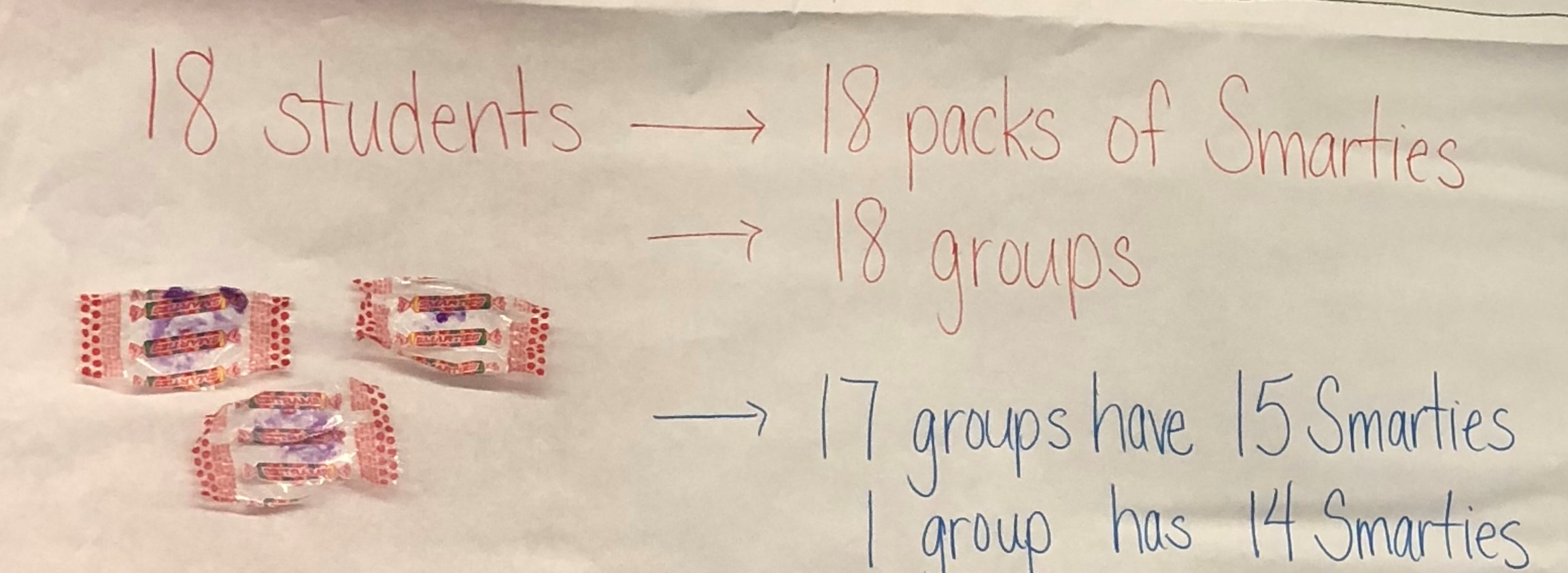
How "SMART" Are We???
Some of you know I am volunteering with two third-grade classrooms in the building where I used to teach. We have spent the first part of this year working on understanding the concepts of multiplication and division. We've built equal groups with counters, skip-counted on a number line, built area models and arrays, learned how to use a number bond to show the relationship between multiplication and division, created visual models, and discovered how to use the distributive property. I have to say it has been very impressive how much these young mathematicians have grown in such a short period of time.
Today I decided to do a lesson that incorporated what we've learned, but challenge the kids to extend their knowledge. I started by passing out a pack of Smarties to each student. I asked them to take a minute to think about what they noticed and what they wondered about their Smarties. After a minute or two of think-time, they worked with their table group to come up with some ideas to share with the whole class. I recorded several of their responses on our class chart.
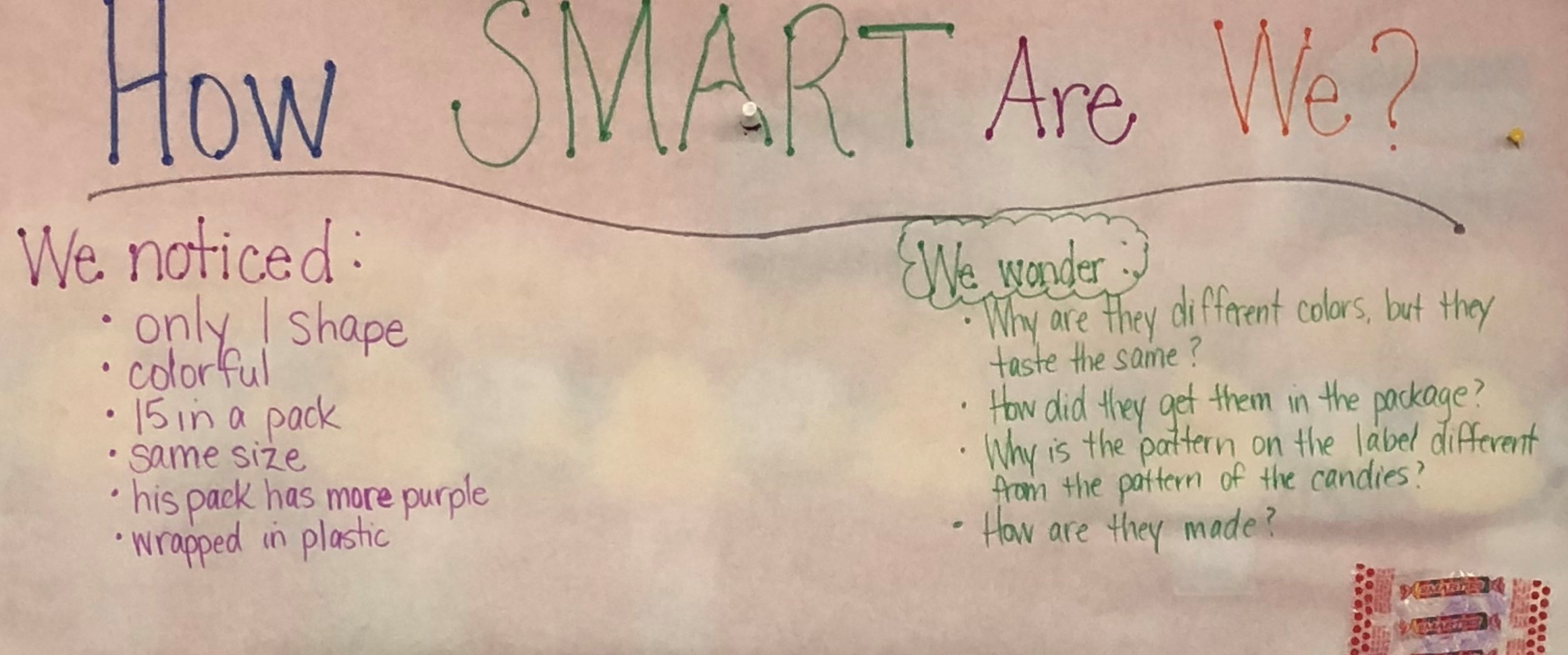
I then asked the students to predict how many Smarties they thought we had in our classroom. In their journals they recorderd their predictions and how they made their prediction. Students wrote their estimate on a small sticky note. Once all predictions were made, they had to sequence themselves, without talking, from least to greatest across the front of the classroom. This was our first experience with sequencing numbers, so we did have to make a few adjustments :)
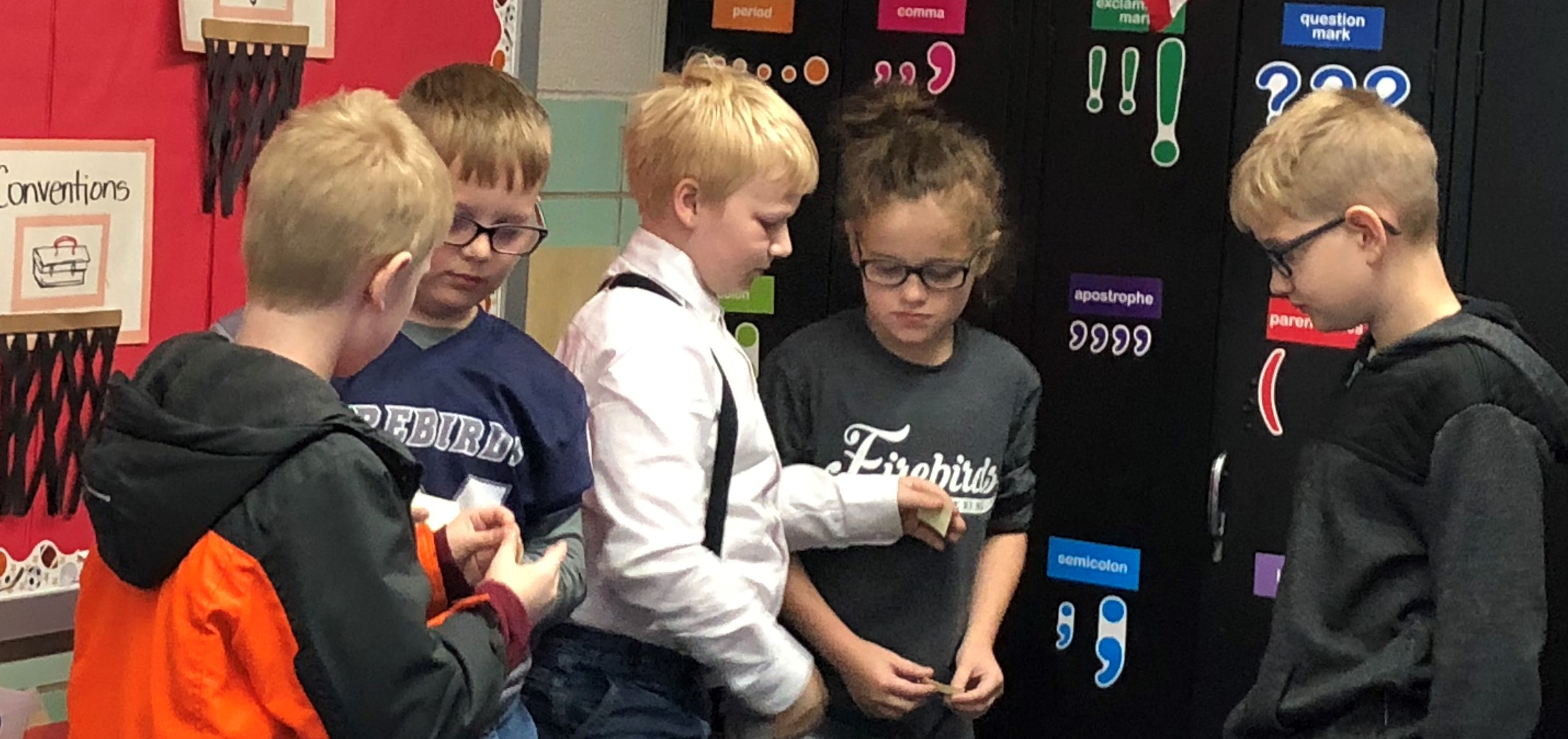
Once we felt we had our numbers in the correct order, we glued them to our chart to make a modified line plot. Two of our predictions were made by two students, so we showed how to stack those on top of each other on the graph. This was only meant to be a quick introduction to a line plot, we will continue to make line plots throughout the year.
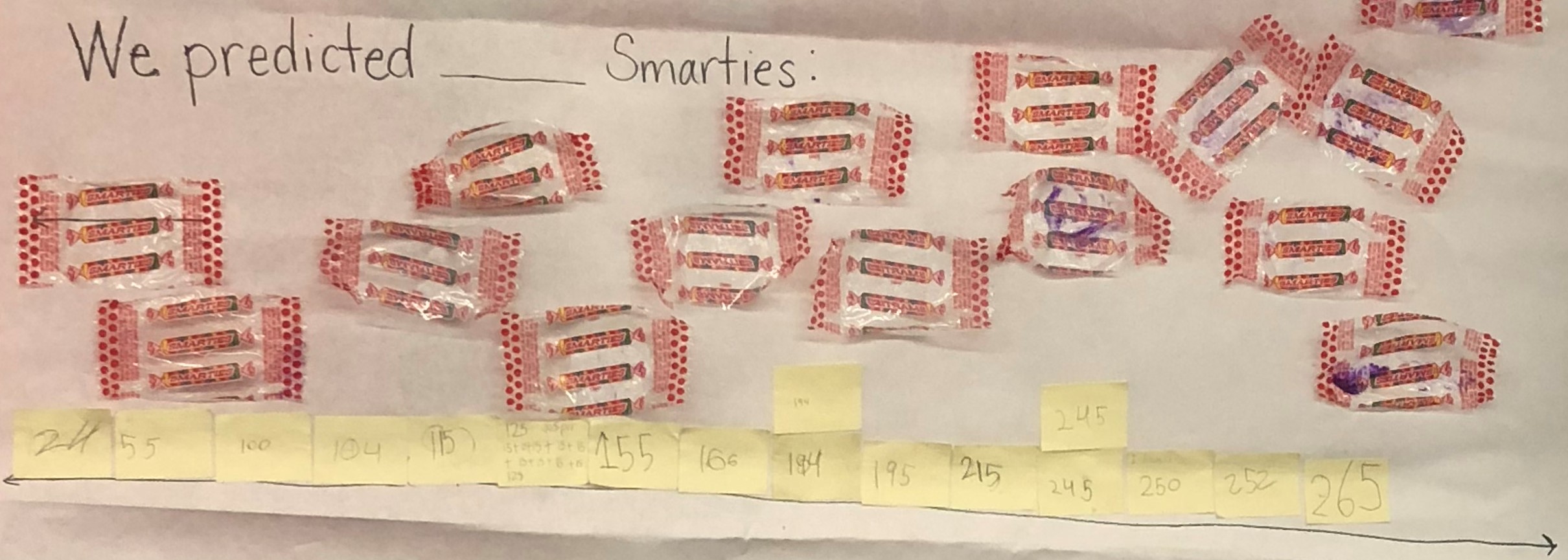
We were able to talk about our range of numbers, and then we discussed which predictions we could eliminate right away. One student predicted 24. When asked to share her thinking, she said she added 19 + 15. She got 19 from the number of students in the class and 15, because she thought there were 15 Smarties in each pack. When asked how she added these numbers, she realized during her explanation she forgot to regroup the "10". I have worked hard on stressing with this class that mistakes are ok. Mistakes are what make our brains grow. I loved the fact she was comfortable sharing her thinking with us, and then to see the lightbulb go off when she realized what she had done wrong. Once we talked about what her answer should have been, and the fact that there were only 18 students, not 19, we moved onto the concept of,"does adding these two numbers make sense?" If one student has 15 Smarties and another student has 15 Smarties, how many Smarties do these two students have? If 2 students have 30 Smarties, would 33 be a good estimate for 18 students? What does the 18 students represent? Using questions such as these, the students discovered we needed to show 18 groups of 15, which would be multiplication or repeated addition.
With students back in their table groups of 3-4 they were asked to come up with a strategy they could use to multiply those two numbers together. Keep in mind our multiplication work up until this project had been using numbers up to 10. Almost every table group said, "we could go around the room and count by 10 and then go back around the room and count by 5!" When asked, "Why?", they said "because there are 18 kids and we each have 15 Smarties. Counting by 15 is kind of hard, but we are good at counting by 10 and 5, and 10 and 5 make 15!"
After we counted by 10 and by 5 I wanted to know if we were finished. They told me no, because we had to combine those two answers together. Looking at 180 and 90, how can we put that together mentally? This made for a great "natural" number talk. It was nice to hear some strong mental math strategies of combining those numbers together to get 270. However, we had one student who only had 14 Smarties in his pack :) They figured out we had to subtract 1 from 270 since we had a "quality control" issue.
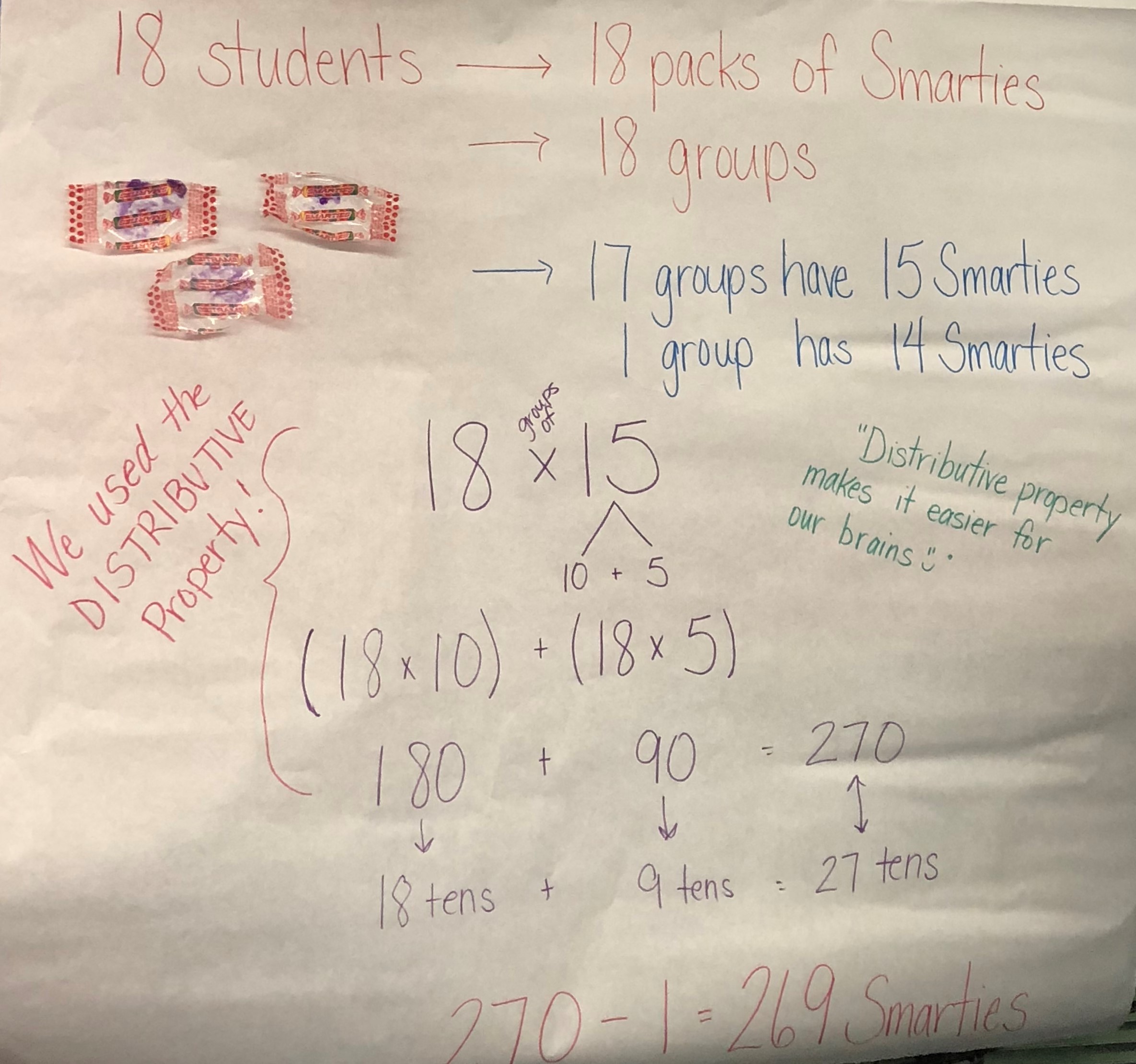
We finished this lesson by having the students record 18 x 15 using distributive property in their journals. In their own words they had to show or tell me what they had learned about distributive property. One of my favorite comments was, "Using distributive property makes it easier for our brains!"
When I was in the classroom I did projects like this once a month. I took our current concept and extended it with other math content such as graphing, estimating, sequencing numbers, and measurement. I shared this concept during a pd training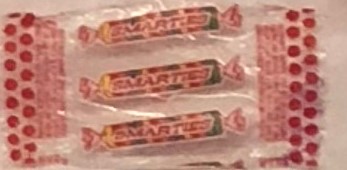 with teachers in Independence, Missouri. If you follow my twitter account @kahflyers, you will see the amazing projects the ISD teachers post. They have taken this idea to amazing levels! If you do this in your classroom, I would love for you to post pictures of your students' work. Feel free to post to the Making Math Make Sense Facebook page or tag me in your Twitter pics. Remember, math is fun! Students learn and make connections when they are engaged. Keep it fresh, and if you need ideas on how to start this, let me know. I'd be happy to help!
with teachers in Independence, Missouri. If you follow my twitter account @kahflyers, you will see the amazing projects the ISD teachers post. They have taken this idea to amazing levels! If you do this in your classroom, I would love for you to post pictures of your students' work. Feel free to post to the Making Math Make Sense Facebook page or tag me in your Twitter pics. Remember, math is fun! Students learn and make connections when they are engaged. Keep it fresh, and if you need ideas on how to start this, let me know. I'd be happy to help!
